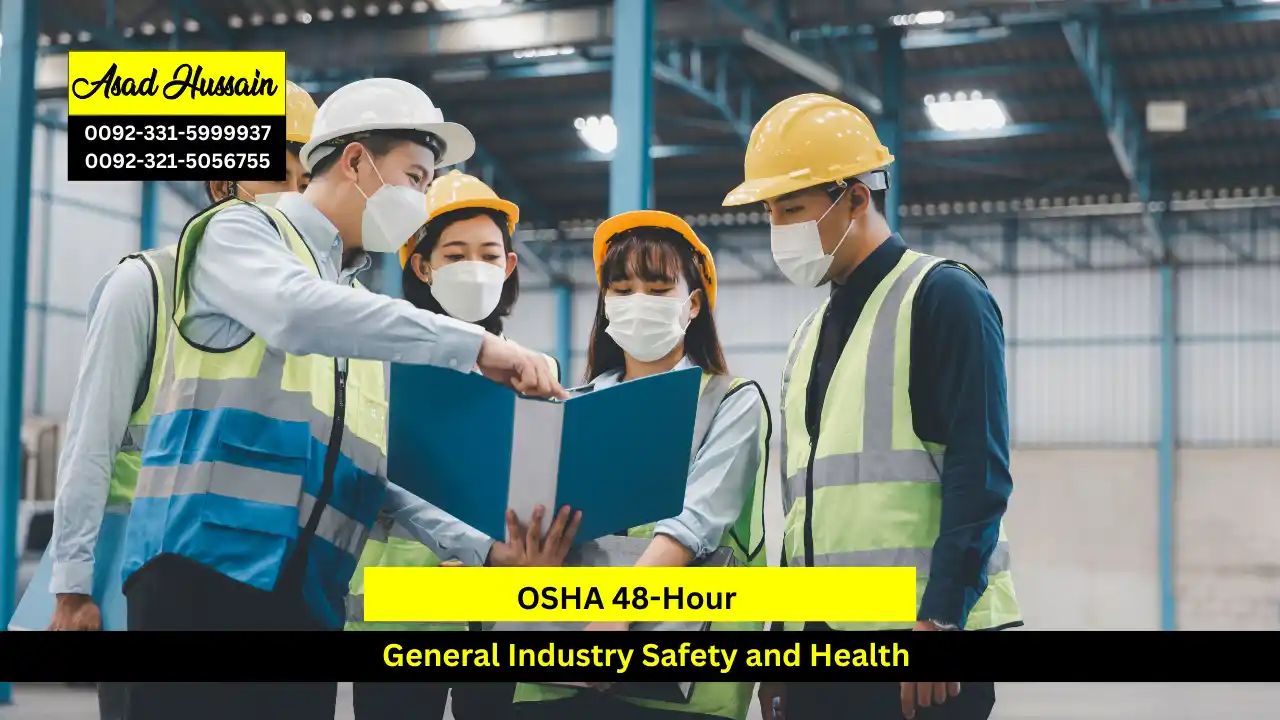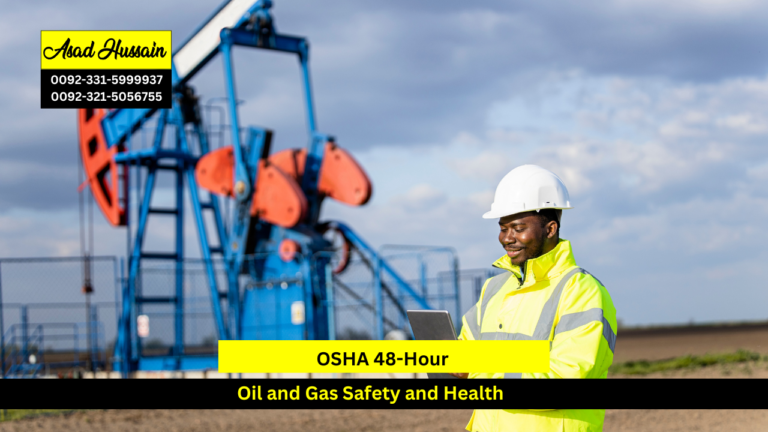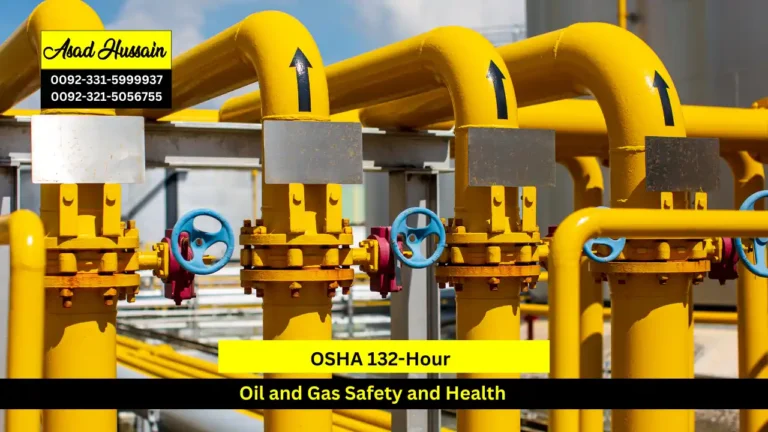In the ever-evolving landscape of workplace safety, the OSHA 48-Hour General Industry Safety and Health program stands out as a pivotal training resource designed to equip employees and safety professionals with essential knowledge and skills. This blog post delves into the key aspects of the OSHA 48-Hour General Industry Safety and Health course, highlighting its importance, content, and benefits for both individuals and organizations.
The OSHA 48-Hour General Industry Safety and Health program is an intensive training course developed by the Occupational Safety and Health Administration (OSHA). This program is designed to provide a comprehensive understanding of the general industry safety and health standards. It aims to educate participants about the identification, evaluation, and control of hazards present in various general industry workplaces.
The OSHA 48-Hour General Industry Safety and Health program plays a crucial role in promoting workplace safety and health. By providing comprehensive training on OSHA standards and hazard control, the program helps individuals and organizations create safer work environments, reduce risks, and ensure compliance with safety regulations. Investing in this training not only protects employees but also contributes to the overall success and sustainability of an organization.
For those committed to improving workplace safety, the OSHA 48-Hour General Industry Safety and Health program offers invaluable knowledge and practical skills that can make a significant difference in maintaining a safe and healthy work environment.
Program Highlights
Mandatory Units
- Introduction to OSH Management
- Risk Assessment and Hazard Identification
- Regulatory Compliance and Legal Requirements
- Safety Program Development and Implementation
- Incident Investigation and Reporting
- Leadership and Communication in Safety Management
- Emergency Preparedness and Response
- Ergonomics and Workplace Design
- Health and Wellness Programs
- Occupational Health and Industrial Hygiene
- Safety Training and Education
- Safety Performance Measurement and Improvement
- Contractor and Vendor Safety Management
- Environmental Management and Sustainabilit
Basic Education and Literacy
- Minimum Educational Level: Participants should have at least a high school diploma or equivalent. This ensures that they have the foundational literacy and numeracy skills needed to comprehend the course materials effectively.
- English Proficiency: Proficiency in reading, writing, and understanding English is required, as the course materials and instruction will be conducted in English.
Relevant Work Experience
- Industry Experience: While not mandatory, having some background or work experience in a general industry setting is beneficial. Experience in roles related to safety, health, or operations can help participants relate the course content to real-world scenarios.
Interest in Safety and Health Management
- Motivation: A genuine interest in improving workplace safety and health practices is essential. Participants should be committed to learning and applying safety management principles to enhance workplace safety.
Basic Computer Skills
- Technology Use: Participants should be comfortable using computers and basic software applications, as the course may involve online components, such as accessing digital resources, completing assignments, or participating in online discussions.
Prerequisite Knowledge (Recommended)
- Introduction to Safety Concepts: Familiarity with basic safety concepts or prior completion of an introductory safety course is recommended but not required. This background can help participants grasp advanced topics more effectively.
Professional or Organizational Endorsement (If Applicable)
- Employer Sponsorship: For those sponsored by an employer, obtaining approval or endorsement from the employer may be necessary. This ensures that the participant’s learning objectives align with organizational safety goals.
Health Considerations
- Accessibility Needs: Participants with specific accessibility needs should inform the course provider in advance to ensure appropriate accommodations are made.
Introduction to OSH Management
- Understand the fundamental principles of Occupational Safety and Health (OSH) management.
- Identify key OSH regulations and standards applicable to general industry.
- Explain the roles and responsibilities of safety professionals within an organization.
- Recognize the importance of a safety culture and its impact on overall workplace safety.
Risk Assessment and Hazard Identification
- Learn methods for conducting effective risk assessments to identify potential workplace hazards.
- Apply techniques for evaluating the severity and likelihood of identified risks.
- Develop strategies for prioritizing risks and implementing appropriate control measures.
- Understand the importance of regular hazard identification and risk assessment in maintaining safety.
Regulatory Compliance and Legal Requirements
- Understand OSHA regulations and legal requirements relevant to general industry safety.
- Identify key compliance issues and their implications for organizations.
- Learn how to interpret and apply OSHA standards to various workplace scenarios.
- Recognize the consequences of non-compliance and strategies to avoid violations.
Safety Program Development and Implementation
- Design and develop comprehensive safety programs tailored to organizational needs.
- Implement safety programs effectively and ensure they are integrated into daily operations.
- Evaluate the effectiveness of safety programs and make necessary adjustments.
- Understand the components of a successful safety program, including policies, procedures, and training.
Incident Investigation and Reporting
- Learn the process for conducting thorough incident investigations.
- Develop skills for identifying root causes of incidents and preventing recurrence.
- Understand the importance of accurate incident reporting and documentation.
- Apply best practices for analyzing incident data to improve safety measures.
Leadership and Communication in Safety Management
- Understand the role of leadership in promoting and managing safety within an organization.
- Develop effective communication strategies for conveying safety information and expectations.
- Learn techniques for fostering a positive safety culture and engaging employees in safety initiatives.
- Enhance skills for leading safety meetings and discussions.
Emergency Preparedness and Response
- Develop and implement emergency preparedness plans tailored to organizational needs.
- Understand the components of an effective emergency response plan.
- Learn techniques for conducting emergency drills and evaluating response effectiveness.
- Recognize the importance of employee training and participation in emergency preparedness.
Ergonomics and Workplace Design
- Understand the principles of ergonomics and their application in workplace design.
- Identify ergonomic risks and implement design solutions to prevent musculoskeletal disorders.
- Evaluate workstation design and recommend improvements for comfort and productivity.
- Learn about ergonomic assessments and adjustments to enhance workplace safety.
Health and Wellness Programs
- Design and implement health and wellness programs to promote employee well-being.
- Understand the benefits of integrating health and wellness initiatives into the workplace.
- Learn strategies for addressing common health issues and improving overall employee health.
- Evaluate the effectiveness of health and wellness programs and make necessary adjustments.
Occupational Health and Industrial Hygiene
- Understand the principles of occupational health and industrial hygiene.
- Identify common health hazards in the workplace and methods for controlling them.
- Learn about monitoring and sampling techniques for assessing exposure to hazardous substances.
- Develop strategies for managing and mitigating health risks associated with industrial processes.
Safety Training and Education
- Develop and deliver effective safety training programs for employees.
- Understand the principles of adult learning and how to apply them in safety education.
- Evaluate the effectiveness of safety training and make improvements based on feedback.
- Learn about various training methods and tools to enhance learning outcomes.
Safety Performance Measurement and Improvement
- Identify key performance indicators (KPIs) for measuring safety performance.
- Develop and implement methods for tracking and analyzing safety performance data.
- Understand how to use performance data to drive continuous improvement in safety practices.
- Learn about benchmarking and best practices for enhancing safety performance.
Contractor and Vendor Safety Management
- Understand the importance of managing safety for contractors and vendors.
- Develop and implement safety requirements and expectations for external parties.
- Learn techniques for evaluating and monitoring contractor and vendor safety performance.
- Establish procedures for integrating contractor and vendor safety into overall safety management.
Environmental Management and Sustainability
- Understand the principles of environmental management and sustainability in the workplace.
- Identify environmental hazards and develop strategies for mitigating their impact.
- Learn about regulatory requirements related to environmental protection and sustainability.
- Implement practices and programs that promote environmental stewardship and sustainability.
The OSHA 48-Hour General Industry Safety and Health course is tailored for a diverse audience dedicated to enhancing workplace safety across various general industry settings. This includes safety professionals and managers who seek to deepen their understanding of OSHA regulations and effective safety management practices. It is also ideal for supervisors and team leaders who are responsible for ensuring compliance with safety standards and promoting a culture of safety within their teams. Additionally, the course benefits human resources personnel involved in safety policy development and employee training, as well as general industry workers aiming to broaden their knowledge of safety protocols. By catering to individuals from various roles and backgrounds, the course aims to build a comprehensive safety foundation that supports improved workplace health and safety outcomes.







